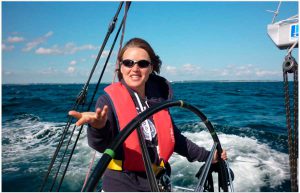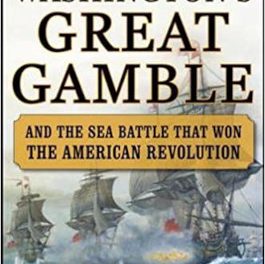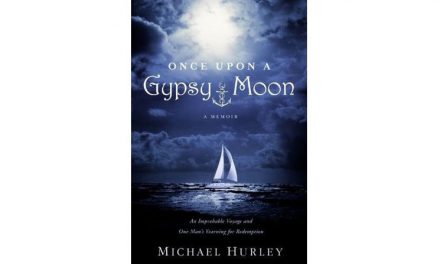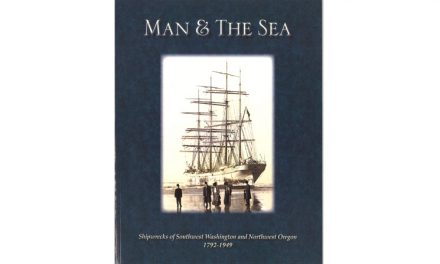Sleepy Women Sailors?
Oh boy. This one is not going to be easy to tackle and dissect. First, we have the utmost respect for the American Sailing Association (ASA). They’ve been around since 1983 and more than half-a-million people have completed their training through their schools, clubs, or programs. We share their interest in spreading the gospel of sailing, obviously.
Now the ASA wants to get more women out on the water and has created a special education campaign towards that goal. We also share the ASA’s goal to get more women sailing, in the hope that one day there is parity and we can no longer safely bet that a given boat’s owner and captain is a guy.
But we think this ASA initiative, while perhaps good in intent and better than nothing, is kind of silly. We don’t think it has much promise. The ASA is not a federal government bureaucracy, yet this initiative resembles some stale approach to this problem that some tired committee put together, checking box after box until they could report they’d completed the task. The ASA should be free to let loose and come up with a fun, inspiring program to pique the interest of non-sailing women, something that might even grab general media attention, not just select boating magazine editors who find the ASA emailed press release in their inboxes. The ASA should do better.
Here’s the headline:
American Sailing Association Launches “Women Wake Up Zone” to Celebrate Women on the Water and Encourage More Women to Sail
“Women Wake Up Zone,” seriously? What kind of name is that? It tells us nothing. We get the “wake zone” nautical reference, but it’s not a nautical reference generally associated with sailboats.
Let’s continue:
Los Angeles (March 21, 2019) The American Sailing Association (ASA), America’s sail education authority, is energizing women to set sail with the announcement of its new education campaign: “Women Wake Up Zone.” As US corporations, politics and the entertainment industry evolve to include greater numbers of women, the sailing industry is riding the wave of gender equality, as well. With International Women’s Day earlier this month, as well as March being designated as Women’s History Month, the world’s largest sailing organization chose March 2019 to embark upon a crusade to bring more women into sailing.
Are those Me Too movement references? And is it true that, “the sailing industry is riding the wave of gender equality?” Well, the ASA is led by a woman, and both Good Old Boat and Cruising World magazines have women publishers at the helm (and 37% of Good Old Boat’s masthead is women, 46% at Cruising World). But as the ASA points out later in its press release, men outnumber women seven to one as registered boat owners. That number belies any assertion that the sailing industry is riding any wave of gender equality. (Though we also wonder how that number might be misleading as it might mischaracterize couples who may be equally involved in the family sailing pursuit and boat ownership, but his name might be listed first on the registration or documentation, and thus counted as male-owned, or vice-versa.) But the point is, while we’ve seen lots of women on the docks and at the helms over the past few decades, our perception is that the ratio of men to women is still way over 50/50 and that there has not been any change we’ve perceived that indicates sailing is, “riding any kind of wave of gender equality.”
But all that aside, what is the ASA planning for their Women Wake Up Zone initiative to change things?
The American Sailing Association aims to lead gender equality in sailing with its “Women Wake Up Zone” education campaign. Designed to erase the stereotypes and eliminate the fear some women have that sailing is too expensive and physically demanding, the initiative aims to create more women sailors. Shabes added, “As we see more women take the wheel and thrive on our waterways, we believe that others will follow in their wake.”
Okay, we agree that women at the helm will beget women at the helm, but how to increase the number of women at the helm?
Classes. (Yes, classes!) Here’s what they’re going to cover:
- Tie the knot – Knots can be tricky and intimidating, but women can be better at tying knots because their hands are often nimbler.
- Raise a sail – Heavy sails that used to require major upper body strength have been replaced with lighter synthetic sails. In fact, men who often try to “muscle” the lines are at a disadvantage because now there are more efficient mechanisms and techniques.
- Work the winch – Maneuver a modern two-speed winch, the device on a boat to pull in or let out wind.
- Save someone – Learn the procedure to follow if someone falls off of a boat.
- Take the helm – Use fingertip precision to steer and sail the course.
Besides the description of these classes seeming kind of absurd, and perhaps not written by a sailor, we think it’s a silly waste of resources. We don’t pretend to have all the answers (and neither do we have the resources that the ASA has). But we’d bet heavy on the inefficacy of this effort.
Our message to the ASA? Get your schools to host open houses for women-only sails, invite the woman anchor or reporter at the local news station out for a sail to publicize it. Reach out to women-only book clubs, inviting whole clubs out for a day of sailing, and give away copies of an ASA sailing title — along with information on how to pursue sailing if they enjoyed the experience. Boots on the ground and real tangible experiences are needed, not vague initiatives and uninspiring classes. Once you get women (people) out on the water and they have a positive experience, learning to “maneuver a modern two-speed winch, the device on a boat to pull in or let out wind” will take care of itself.
Finally, we are encouraged by a stat the ASA listed at the end of their press release: “In 2018, one third of all new students at the ASA schools nationwide were women, and the organization expects that by the year 2020, at least half of all new students will be women.”
We hope so. –Eds.
 A Warning from BoatUS
A Warning from BoatUS
The upcoming July issue of Good Old Boat magazine will feature an in-depth story on ethanol. This BoatUS press release also relates to ethanol, and what may lie ahead. –Eds.
President Trump has officially moved to allow E15 (15 percent ethanol) gasoline sales year-round – a fuel prohibited for use in recreational boats and a decision that recreational boating groups say will needlessly put 142 million American boaters at risk. Protecting boaters at the gas pump is a new website with a series of photos of gas station pumps in Illinois, Indiana, and Wisconsin, that clearly shows the challenges boaters face with poor ethanol warning labels at the pump, resulting in a greater risk of misfueling.
The effort is from the National Marine Manufacturers Association (NMMA), which was recently shared in “Boating United” campaign that urges recreational boat owners to tweet their members of Congress to stop the expansion of the government-mandated fuel. Boat Owners Association of The United States (BoatUS) supports the effort and is urging recreational boaters to share the website with friends: https://spark.adobe.com/page/dYPx7SjouAr2k/
“The ethanol industry doesn’t want you to see these photos of gas pumps,” said BoatUS Manager of Government Affairs David Kennedy. “The confusion presented to consumers at the pump today is real. Putting the wrong fuel in your boat will likely void your engine’s warranty. We applaud NMMA for clearly showing the misfueling problem.”
E15 is currently banned for sale in many states by the Environmental Protection Agency during summer months over concerns that it contributes to smog on hot days. The push for more ethanol into the nation’s fuel supply is a result of the Renewable Fuel Standard (RFS). When it was passed in 2005, RFS assumed that America’s use of gasoline would continue to grow. Since then, however, gasoline usage has not increased as forecast, which today forces more ethanol into each gallon of gas.
BoatUS has long had concerns over potential consumer misfueling with E15. Most recreational boaters refuel their vessels at roadside gas stations where pump-labeling requirements are minimal with just a small E15 orange warning label. The advocacy, services and safety group for recreational boaters is a member of Smarter Fuel Future, a coalition that aims to reform the RFS.
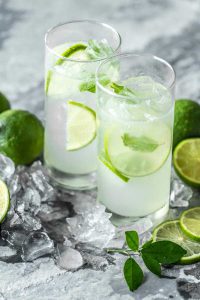 Nautical Trivia
Nautical Trivia
Thirsty for a tasty rum punch but you’re not sure how to make one and you don’t have a recipe at hand? Okay, that scenario is probably unrealistic in today’s smartphone age, but it’s fun to be able to pull some things from your brain, so here’s a nautically rhyming way to remember how to make the perfect rum punch:
One of sour
Two of sweet
Three of strong
Four of weak
Of course, the sour, sweet, strong, and weak are generally lime, simple sugar syrup, rum, and water. Enjoy!

